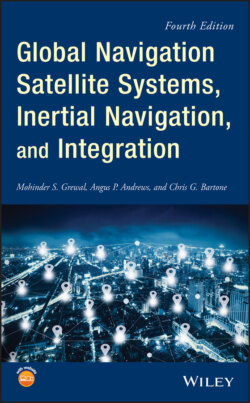Читать книгу Global Navigation Satellite Systems, Inertial Navigation, and Integration - Mohinder S. Grewal - Страница 47
1.3.2.5 Accounting for Gravity
ОглавлениеBecause accelerometers cannot measure gravitational accelerations, these must be calculated using the position and attitude solutions and added to the sensed acceleration. Otherwise, an INS resting on the surface of the Earth would measure only the upward support force countering gravity and think it was being accelerated upward.
The need to calculate gravity causes vertical dynamic instability of the navigation solution, because gravitational acceleration decreases with altitude (Newton's law of universal gravitation). Therefore, a navigation error in altitude leads to an error in calculating the unsensed downward gravitational acceleration. Upward navigational errors cause decreased downward gravity estimates, leading to a net upward acceleration error and to exponential growth of vertical velocity error and even faster growth in altitude error. This may not be a problem for ships at sea level, but it is serious enough otherwise that inertial navigators require auxiliary sensors (e.g. altimeters or GNSS) to stabilize altitude errors.
Gravity modeling also alters the dynamics of horizontal errors in position and velocity, but this effect is not unstable. It causes horizontal errors to behave like a pendulum with a period of about 84.4 minutes, something called the Schuler period.5 When Coriolis force is taken into account, this error behaves like a Foucault pendulum with that period.
